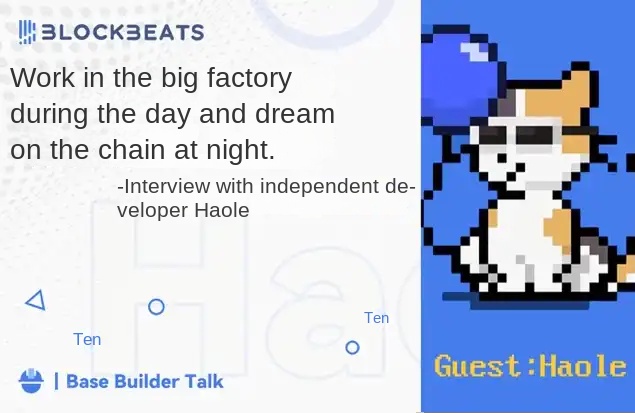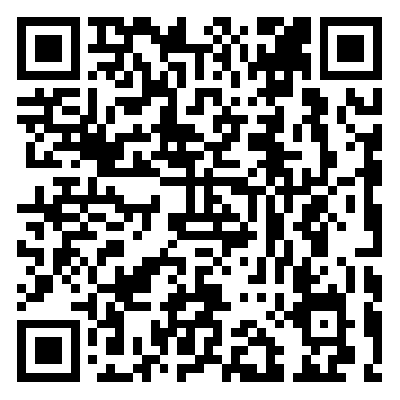Facing the DeSoc Challenge: Tako's Contribution to the Modular Blockchain Era
Source: Tako
Title: "Assembling the Decentralized Social Puzzle: Tako's Contribution to Modular Blockchain Era"
Translation: BlockBeats
Modular blockchain technology breaks down complex systems based on blockchain into smaller, standardized components that can be mixed, matched, recombined, and easily integrated and combined to create more powerful and flexible applications. This evolution from the centralized and singular nature of traditional models to a more decentralized and modular approach represents the transition from Web2 to Web3. In traditional models, social media companies exercise absolute control, but not in the new model. As Joel Monegro wrote in his article "Virtual Blockchain in the Modular Age": "As technology infrastructure becomes more standardized and widely available, it will become more powerful and easier to use. But before that, entrepreneurs must invest heavily in building their own infrastructure before distributing their applications, just as Edison invented the power grid to sell light bulbs, or early internet startups deployed data centers to run web pages." Until recently, the infrastructure needed for truly outstanding Web3 applications was not widely available; however, the emerging decentralized social (DeSoc) field can leverage this infrastructure, which is looking for its foothold to counter those entities that are completely centralized and have benefited greatly from network effects. This is in stark contrast to the currently booming blockchain-based decentralized applications (Dapps), which adopt specialized stack components by using blockchain to better capture and record value.

Like RSS3, Arweave, and IPFS, Tako Protocol is also building important decentralized data infrastructure in the field, and believes that DeSoc's foothold will be modular, as builders in this field know that a DeSoc stack composed of professional components will be more powerful. Compared to Web3, this marks a significant shift in the way technology infrastructure is funded, managed, and maintained. In Web2, companies typically had to invest significant capital expenditures (Capex) to invent or otherwise build and maintain their entire infrastructure. These startups had to "move fast and break things" because they didn't have enough infrastructure components to use, and it was a winner-takes-all market. Therefore, the traditional model of Web2 often manifested as an almost singular state when achieving a "winner-takes-all" state, but compared to the new paradigm of social applications in Web3, this purist construction method is actually not as flexible or efficient.
With the emergence of smart contract networks such as Ethereum, Optimistic Rollups, and ZKP, as well as decentralized storage platforms like Arweave and IPFS, the demand for widespread infrastructure has decreased. Other platforms further facilitate this trend by providing tools to create custom blockchains, making it easier to build secure chains according to the specifications of consumer application developers. In contrast to the control granted by private blockchains, Web 3's public blockchain, with its core values of decentralization, transparency, and providing an open arena for builders, plays a key role, as does social graph protocols such as Lens Protocol and Farcaster. They contribute to the development of decentralized applications (Dapps) in the Web3 space, which can build their own vision on top of them without paying large upfront capital expenditures when hiring technicians to develop from scratch.
By abstracting common elements and creating standard smart contracts and interface components designed specifically for DeSoc gamification, Tako will reduce the cost of launching Dapps and accelerate product launches. This abstraction makes it easier to build more complex applications, shifting from a personnel cost-driven structure to an Opex-driven cost structure. Faster, lower launch costs mean more iteration and experimentation throughout the space. In contrast to the slow progress we have seen in DeSoc development in the past, Tako's infrastructure and tools for building decentralized social network ecosystems help drive the DeSoc industry towards more disruptive standards, which can also more effectively break the current state of the social media field.

In short, with the standardization and wider availability of modular blockchain technology, companies can now turn to an operational expenditure model where parts of their stack are provided as a service by specialized providers. Tako will provide services for the best DeSoc applications, making its platform more gamified according to its own standards.
This means that Web3 DeSoc enterprises can access more powerful, secure, and customizable gamification, middleware, and data storage infrastructure without the need for significant upfront investment in their technology stack. Therefore, they can invest more time and development resources into the parts of their stack that they excel at, ultimately improving the performance and user experience of their end products.
On the other hand, Web2 companies like Facebook, Youtube, Twitter, and Instagram, although still investing heavily in their infrastructure, actually slow down their development pace due to their preference for having complete control over the entire stack. As they strive to add new features, address user criticisms, and implement profit opportunities for the creators who bring the most attention to their platforms, their progress is significantly hindered.
Let's take a deep dive into how Twitter's stack operates, as it is the preferred social media platform for most people in the encryption industry: Twitter uses various technologies to support its platform, including Java, Scala, Ruby on Rails, MySQL, Cassandra, Hadoop, and Apache Storm. As for Twitter's macro architecture, it is a distributed system composed of multiple layers. At the bottom, there are data centers containing physical servers. Above this layer, there is a network layer that handles communication between servers. Above the network layer, there is a storage layer that includes several databases, including MySQL and Cassandra for different purposes. Above the storage layer, there is a caching layer that uses technologies such as Memcached and Redis to speed up data access. Next is the service layer, which is responsible for handling user requests and providing responses. This layer consists of several microservices. Finally, at the top, there is the client layer, which includes the Twitter website and its mobile applications. The client layer communicates with the service layer through APIs, allowing users to interact with the platform.
If you think this is already complicated enough, please understand that this is just a summary of the highly simplified Twitter technology. Therefore, let's discuss all the disadvantages of Twitter having complete control over its technology stack and platform. The most obvious disadvantage is the potential for bias or censorship. Because of its absolute control, Twitter may manipulate its algorithms and content moderation to promote or suppress specific viewpoints or ideologies, which could limit freedom of speech and hinder open dialogue. This may raise concerns about platform fairness and diversity of opinions. In fact, "The Twitter Files" showed us how federal agents delved into the structure of Twitter and used their influence over Twitter employees to suppress or enhance certain information spread by Twitter users.
In addition, relying solely on Twitter's technology stack and review process may lead to a lack of accountability. Without external oversight, there is a risk of unchecked power. This may result in arbitrary enforcement of rules or inconsistent application of policies, leaving users frustrated or feeling unfairly treated. Another issue is the potential for reduced innovation and competition. By having complete control, Twitter may lack the incentive to innovate or collaborate with external developers. This could limit new features or improvements that could benefit users, ultimately lowering user satisfaction. Additionally, relying solely on their own technology stack may make Twitter more vulnerable to technical issues or security vulnerabilities. Even when purchasing this social media giant, Elon Musk expressed dissatisfaction with the original Twitter board's dishonesty about the number of bots on the platform. Even in the hours leading up to writing this passage, Twitter's tweet stream experienced a malfunction, leaving users unable to see their posts on Twitter.
In the constantly evolving digital field, having diverse technologies and partnerships can better protect against these risks and further help maintain a sufficiently dispersed social public square managed by those who use it most frequently. While Twitter and other major social platforms having complete control over their technology stack and platform moderation may have some benefits, such as consistent policies and user experience, potential drawbacks need to be considered. These include biases in content moderation, censorship concerns, lack of accountability, reduced innovation, and increased vulnerability to technical issues. Striking a balance between control and external input is crucial to ensuring an inclusive and secure platform.
Moreover, many well-known content creators on applications feel that their work is not fairly compensated. It is commendable that Twitter has indeed rewarded these creators, but payments have significantly decreased in recent months. The company also struggles to obtain regulatory approval for its own payment network, so that users can transfer funds to each other.
This is DeSoc's opportunity. The lack of flexibility and huge upfront costs force these giants to rely on advertising revenue and selling user data to marketing teams. Unlike opinion leaders with a large following on these platforms, DeSoc's core players, such as Nostr and Lens Protocol, have already integrated with Lightning Network and Polygon Proof of Stake Network payment networks, so any user can send cryptocurrency to any other user on a transparent and immutable blockchain. This is a huge advantage for those seeking to attract creators and create gamified DeSoc applications.

Overall, the modular concept in blockchain technology is crucial. Modularization refers to the ability to break down complex systems into smaller, interconnected modules or components. These modules can be developed and maintained separately, making it easier to scale, enhance security, and increase flexibility. In terms of scalability, modularization allows for easy addition or removal of modules as needed, enabling the blockchain network to handle growing transaction volumes more efficiently. This improves the overall performance and capacity of the system, ensuring it can accommodate a larger user base without sacrificing speed or reliability. In terms of security, modular design enhances the resilience of the blockchain network by isolating potential vulnerabilities within specific modules. This means that if a module experiences a security breach, it can be isolated and addressed without affecting the entire system. This approach reduces the impact of threats, lowers the likelihood of large-scale attacks, and makes the blockchain network more secure.
In blockchain, flexibility is another key advantage of modularity. By having independent modules, developers can easily upgrade or replace specific components without disrupting the entire system. This enables faster innovation and adoption of new features, ensuring that the blockchain network can adapt to constantly changing business needs and technological advancements. Tako platform embodies these principles through its architecture and services.
Tako reduces the costs associated with building and scaling blockchain applications by providing shared development of Web3 standards and smart contract services, leveraging the modularity movement in Web3. Tako's unique contribution in modular blockchain, particularly in decentralized social media monetization, highlights the potential of blockchain technology to transform various industries. Looking ahead, the continued advancement of modular design and growth of decentralized, modular blockchain ecosystems, with platforms like Tako, has enormous potential for reshaping our digital world.This article is from a submission and does not represent the views of BlockBeats.
Welcome to join the official BlockBeats community:
Telegram Subscription Group: https://t.me/theblockbeats
Telegram Discussion Group: https://t.me/BlockBeats_App
Official Twitter Account: https://twitter.com/BlockBeatsAsia
 Forum
Forum OPRR
OPRR Finance
Finance
 Specials
Specials
 On-chain Eco
On-chain Eco
 Entry
Entry
 Podcasts
Podcasts
 Data
Data


 Summarized by AI
Summarized by AI







